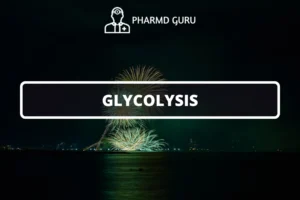The citric acid cycle, also known as the tricarboxylic acid (TCA) cycle or the Krebs cycle, is a central pathway in carbohydrate metabolism that occurs in the mitochondria of eukaryotic cells. It is a key component of aerobic respiration, serving as a crucial link between glycolysis and the electron transport chain. This article explores the process of the citric acid cycle, highlighting its steps, regulation, energy production, and significance in cellular metabolism.
SCROLL DOWN TO THE BOTTOM OF THE PAGE FOR ACTUAL NOTES
Table of Contents
- Introduction to Carbohydrate Metabolism
- The Citric Acid Cycle: Overview
- Steps of the Citric Acid Cycle
- Regulation of the Citric Acid Cycle
- Energy Production in the Citric Acid Cycle
- Significance of the Citric Acid Cycle in Cellular Metabolism
1. Introduction to Carbohydrate Metabolism
Carbohydrate metabolism involves the breakdown and synthesis of carbohydrates within cells, providing energy and essential building blocks for various cellular processes. The citric acid cycle is an integral part of carbohydrate metabolism, playing a central role in energy production through the oxidation of carbon compounds.
2. The Citric Acid Cycle: Overview
The citric acid cycle is a series of enzymatic reactions that occur in the mitochondria. It starts with the entry of acetyl-CoA, derived from various metabolic pathways, into the cycle and concludes with the regeneration of oxaloacetate, which can then combine with another acetyl-CoA to initiate the next cycle. The citric acid cycle is composed of eight steps, each catalyzed by a specific enzyme.
3. Steps of the Citric Acid Cycle
Step 1: Citrate Formation
Acetyl-CoA combines with oxaloacetate, forming citrate, in a reaction catalyzed by the enzyme citrate synthase.
Step 2: Isomerization
Aconitase catalyzes the isomerization of citrate to isocitrate.
Step 3: α-Ketoglutarate Formation
Isocitrate is oxidized by isocitrate dehydrogenase, producing α-ketoglutarate and reducing NAD+ to NADH.
Step 4: Succinyl-CoA Formation
α-Ketoglutarate is decarboxylated and oxidized by α-ketoglutarate dehydrogenase, generating succinyl-CoA, CO2, and reducing NAD+ to NADH.
Step 5: Succinate Formation
Succinyl-CoA is converted to succinate in a reaction that releases energy and transfers a high-energy phosphate to GDP, forming GTP (which can be converted to ATP).
Step 6: Fumarate Formation
Succinate is dehydrogenated by succinate dehydrogenase, producing fumarate and reducing FAD (flavin adenine dinucleotide) to FADH2.
Step 7: Malate Formation
Fumarate is hydrated by fumarase, resulting in the formation of malate.
Step 8: Regeneration of Oxaloacetate
Malate is oxidized by malate dehydrogenase, regenerating oxaloacetate and reducing NAD+ to NADH. Oxaloacetate can then combine with another acetyl-CoA to begin the cycle again.
4. Regulation of the Citric Acid Cycle
The citric acid cycle is regulated through various mechanisms to maintain metabolic homeostasis. Key regulatory enzymes include citrate synthase, isocitrate dehydrogenase, and α-ketoglutarate dehydrogenase. These enzymes are subject to allosteric regulation and control the rate of the cycle based on the energy demands of the cell.
5. Energy Production in the Citric Acid Cycle
The citric acid cycle plays a crucial role in energy production. During each round of the cycle, energy is harvested in the form of reduced coenzymes, NADH, and FADH2. These coenzymes carry high-energy electrons that are subsequently used in the electron transport chain to generate ATP through oxidative phosphorylation.
6. Significance of the Citric Acid Cycle in Cellular Metabolism
The citric acid cycle is a vital component of cellular metabolism. It serves as a hub for the oxidation of carbon compounds derived from carbohydrates, fats, and proteins, generating energy and providing intermediates for various biosynthetic pathways. Furthermore, the cycle is interconnected with other metabolic processes, ensuring the efficient utilization of available resources.
ACTUAL NOTES




